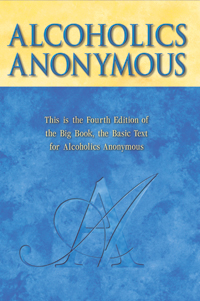
(1955)

 |
Foreword to the Second edition (1955) |
 |
The Foreword to the Second Edition begins with the news that the deluge of requests for help anticipated in the previous foreword did, in fact, come to pass. From 'more than one hundred men and women' the fellowship had grown to over 150,000 in over 50 countries.
The story of the co-founders' encounter was previously told in A Vision For You, but is here recounted with added detail and context. Their occupations are mentioned (though not their names), as is the place of their meeting. The full extent of Dr. Silkworth's involvement in the pioneering days of the fellowship is also revealed here. The role of the Oxford Group in the early fellowship is discussed here as well. These facts are not strictly necessary for recovery, but their inclusion may be the result of interest among A.A. members and the religious and medical societies whose inquiries were invited in the previous Foreword. The inclusion of more identifying details, especially acknowledgement of the influence of the Oxford Groups, which had fallen in to disfavor at the time of the First Edition, may demonstrate a greater confidence on the part of the rapidly-growing fellowship.
Several pages go on to describe the founders' first meeting, their early work in Akron, the growth of the fellowship, publication of Alcoholics Anonymous, and the subsequent notice the book received among some religious leaders and in the popular press. The growth produced by this notice far outstripped their own efforts to spread the message of recovery, for "There is never need to praise ourselves. We feel it better to let our friends recommend us." (Eleventh Tradition, long form) This may have been one of the 'anvils' of experience' which hammered out the idea of "Attraction, not promotion."
Rapid growth potentially threatened the unity of the now-established fellowship, prompting thoughts of ways groups could be brought into alignment and agreement. Hence the eventual development of the Traditions that still guide Alcoholics Anonymous to this day.
Cooperation with religious and medical establishments is mentioned, as before.
The diversity of the fellowship is mentioned, as it is in There is a Solution.
Even though it is not likely the fellowship can help more than a fraction of the alcoholics suffering from the disease, the authors express hope that many of them can find the answer in the pages which follow.